Outside the designated area. Unconventional venues in the outdoor arts
Moradavaga - a contraction of the Portuguese words for indefinite address - is a collective born from the collaboration of architects Manfred Eccli (ME) and Pedro Cavaco Leitão (PCL) in 2006. Intersecting architecture, art and design, devising performative objects with active participation, their interventions function as dormant tools "in a waiting status", requiring the users' engagement to be activated. In this article, the two founders give advice learnt from their settled practices and direct experiences, sharing suggestions for future art forms in unconventional venues.
PCL: Almost 20 years ago, as an inexperienced and naïf architect fresh out of college, somewhat disenchanted with the grim prospects of a future life spent sitting behind a desk in front of a computer display, I stumbled upon a situation that changed the course of my professional life. I was strolling around Plaza Mayor in Madrid when I saw a man taking advantage of the hot air expelled by underground parking ventilation ducts in one corner of the square and tied some toilet paper strips to the metal grid of the floor vents. With this "fluttering mini gothic cathedral" made of paper and wind, he charged one euro to each child's parents. As a young architect, I was fascinated by this clever endeavour. I wanted to enter, pass through, or shoot a photo inside that magical, fleeting space. This simple and cheaply striking example remarkably encapsulated many personally invaluable lessons regarding art for the outdoors creation, synthesising a diverse set of concepts and strategies, ticking several boxes in what concerns the approach to design and production of such types of works.

ME: Back in 2008, during my first year in the office at raumlaborberlin, one of the co-founders, Matthias Rick, gave me an inspiring text about temporary use(s) of abandoned space(s) written by Peter Arlt*. In this passage, the author explores some analogies between an intermediate user and “the guerrillero”, revealing an inspiring way to deal with unconventional contexts: “Another analogy between the intermediate user and the guerrillero: the guerrillero is never a strategist but the classic tactician. He depends on drawing his strength from his surroundings - after all, he is not on the side of state power but rather fighting it. In this aspect lies the analogy with the temporary user, who is not looking for just any empty house, but a specific one, in a special area, with a good atmosphere. The guerrillero knows exactly where his actions are but also finds great support among the local population, for whom he fights like a modern-day Robin Hood. Even intermediate users usually have sympathies on their side, not only from the population but also from the media. The ideal is central for both: the guerrillero, compared to the ordinary soldier, hardly ever has motivational problems. The interim user fights for his cause and is therefore highly motivated, whether it is a club, a gallery or a bar. It is never about the money for him but about implementing his ideas. This principle goes hand in hand with the temporary user's smooth transition between work and leisure time, between independence and private life. In this regard, the intermediary user is again a forerunner of the capitalist economy, which requires the employee to have a high level of personal identification with work, the workplace, and the company and to allow the strict separation between work and leisure time to disappear. The only difference is that the intermediate user is doing his own thing and not working for someone else."
In this text, we want to share some key elements and methods we have treasured over the years of our activity when creating and designing artworks for unconventional spaces. The starting ingredient, which is usually pre-existent, is the location with all its physical characteristics, including cultural and social values associated with it. The genius loci - the “spirit of the place” - often contains guidelines to shape a piece. Unlike a theatre or similar venue - where the conditions of the surrounding environment are very controlled and controllable - it could be used as an advantage with its specific spatial aspects by presenting some material particularity or inspiration to create a narrative.
Once, we shaped a project in a forest environment. It appeared conventional, but on a deeper look, it could have been seen and felt as another overlapping layer filled with a strong historical background. The valley of Val Saisera - part of the Friulian Alps in Italy - resonates with memories of the First World War, and its conflicts can still be felt in the landscape engraved in stone and excavated on earth and rock. That was the context for our artistic intervention called Scalare. Using a different size set of wooden ladders - built with the remains of fallen trees from the area - we embarked on a ten days “campaign” across the forest, exploring different locations and settings with this group of objects as if members of a platoon grouped in a trench or scattered along the woods. This time the ladder was used as a sign of connection, bridging different positions, changing perspectives, and reaching new points of view in un-pretentious ways: a tool for peaceful action. The approach for this work was day-by-day and open-ended. We just documented our temporary traces with images, videos and notes. At the end of our “journey”, we returned our tools to the forest.
Scrambling the coordinates of established rules and pre-conceptions about social norms and conduct when designing for unconventional spaces blurs the boundaries between genres and roles, contributing to a change of statuses, and a more active, engaged and participative audience.
In the street/urban art scene, the city and the urban landscape become a canvas. The artists make their work noticeable by displacing it in unusual places of high visibility - often in un-commissioned and illicit ways. Art in unexpected spaces, unforeseen manners and formats generate an unsolicited but mostly welcome disruption of the instant, unprepared spectators. Bumping into the extraordinary while passing through the same local square while rushing to work or getting back from school can have a lasting impact and testifies to the power of the element of surprise in art. Scrambling the coordinates of established rules and pre-conceptions about social norms and conduct when designing for unconventional spaces blurs the boundaries between genres and roles, contributing to a change of statuses, and a more active, engaged and participative audience. In line with this displacing approach, another strategy, often used in temporary architectural environmental constructions, art installations, and stage actions is the binomial “uncommon objects in common places/common objects in uncommon places”. Invited by the Walk&Talk festival to participate in its 6th edition on the island of São Miguel in the Azores, we took inspiration from the rich sea life in and around the Atlantic archipelago to produce a site-specific piece of interactive sound art. Influenced by the stunning landscapes and the mystic aura related to whales, our mind wandered through old tales like Moby Dick by Herman Melville and 20.000 Leagues Under the Sea by Jules Verne. The presence of sperm whales along the Azorean coasts led us to devise a character, Vernie, the giant squid, that came from the ocean’s depths to serve as a communicative, playful tool for passers-by of all ages at Portas do Mar in the city of Ponta Delgada.
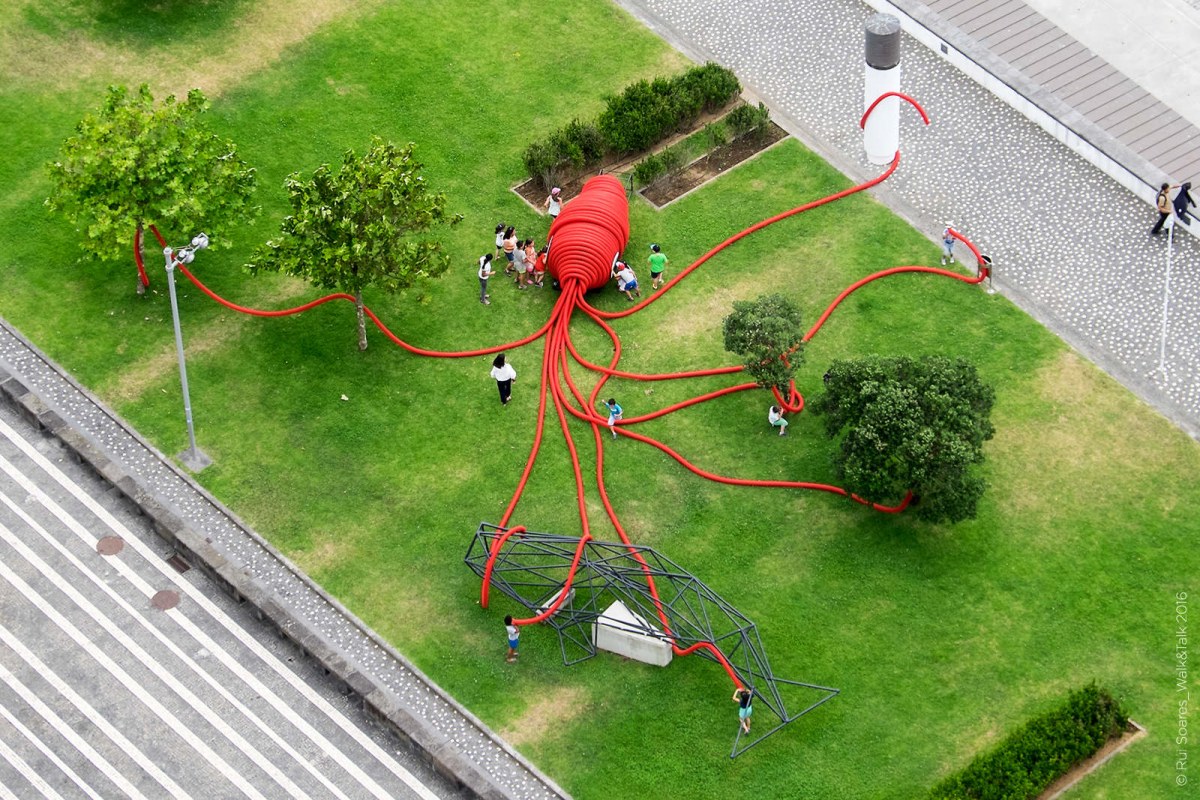
Repurposing everyday objects as building components can create new visual and sensorial landscapes, revealing their hidden creative potential. At the same time, this practice reduces the budget and avoids time constraints by using standard supply chains and production. Our installation Vira-Lata was born from an invitation to conceive an artistic piece that could integrate a broader municipal project for a new public square next to Porto’s central train station. The title has a double meaning that plays on the Portuguese words for a stray dog - referring to the bad reputation of that urban area - and the physical action of rotating cans. The gesture for the idea behind the project arose from the critical interpretation of the territory at hand, proposing a vertical element, both ludic and functional, that connected the level of the new square to one of the adjacent streets passing above. Crossing references from the railway world, the concept for the interactive facades of this public staircase derived from the informative screens in the stations that display the departures and arrivals. Using a system of two different colours, the yellow of the local train carriages and the natural metal colour of the tin cans, we offered the analogue possibility to turn each can as if in a massive analogical pixel screen. The audience could decide to participate actively in the constant mutation of the square’s image.
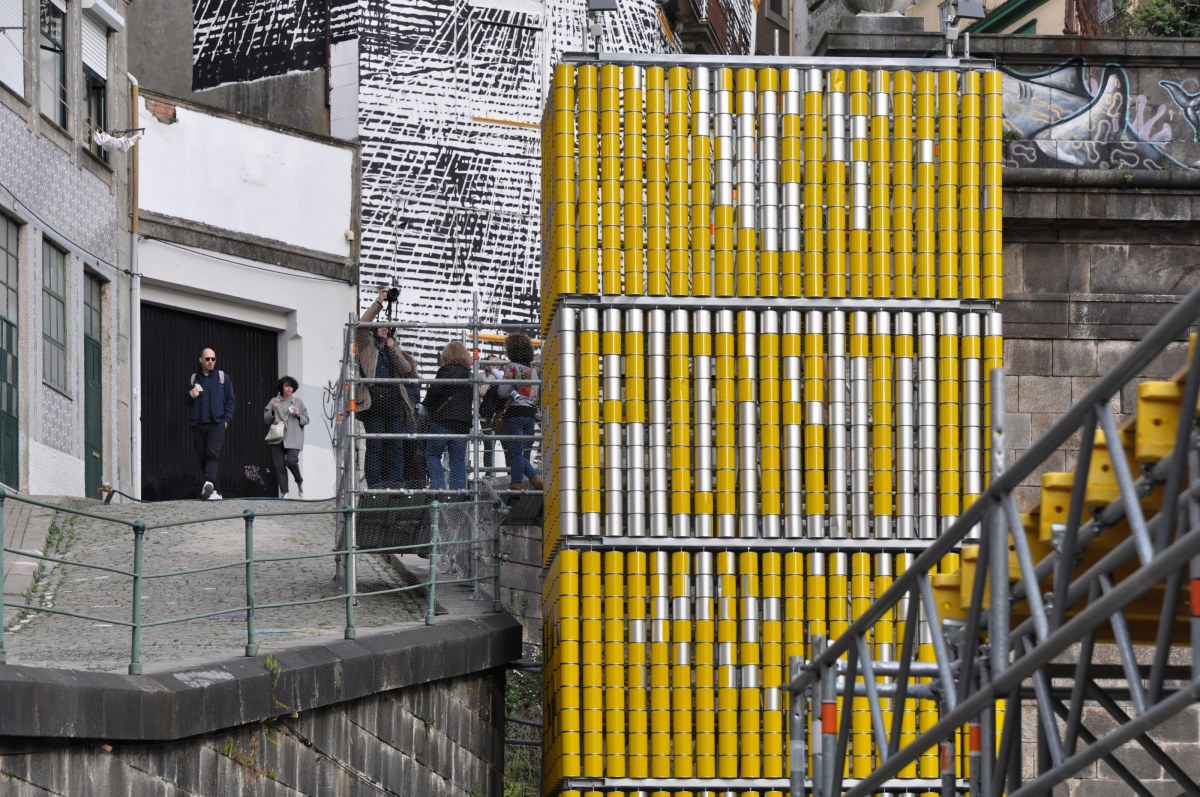
When one happens to work away from the formal venues, stepping outside the “designated areas” for such cultural fruition, a whole new world opens up, and the possibility of reaching a wider non-specialized audience rises.
Public space and other non-specifically designed spaces present different challenges. They can offer opportunities for dramaturgical, expressive and communicative exploration and experimentation with various kinds of confrontations with an audience. When one happens to work away from the formal venues, stepping outside the “designated areas” for such cultural fruition, a whole new world opens up, and the possibility of reaching a wider non-specialized audience rises. In choosing the setting, focus on a general reason, set goals, and a narrative for it. It helps to orientate during the long-term project development, to resume and improve the work results with regard to the initial ideas. Accepting and learning by doing is fundamental to handling unconventional moments in unconventional venues. Especially with unknown environments and contexts or experimental collaborations projects tend to develop in unpredictable ways. It could be the instalment of a new interactive prototype thought for a specific reason in a particular context with a function, and it might succeed as intended, or it might not. In conclusion, do not underestimate intuition and feelings: the common traits and raw materials of good work are people’s basic human emotions, such as curiosity, imagination, enchantment and wonder, regardless of their cultural background, social status or age group.
* Arlt, Peter (2006): Stadtplanung und Zwischennutzung. In: Haydn, Florian; Temel, Robert (Hg.): Temporäre Räume. Konzepte zur Stadtnutzung. Basel, pag.45
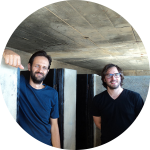
Moradavaga is a collective born from the collaboration of architects Manfred Eccli (Bolzano, Italy, 1981) and Pedro Cavaco Leitão (Porto, Portugal, 1976). Moradavaga started working in 2006 around the issues of vacant spaces, derelict buildings and the activation of the public realm, devising performative objects and active interventions, such as social workshops, ideas competitions and architectural happenings. Its eclectic works have gained international recognition over the years, evidenced by its participation in events promoted by renowned institutions and organisations such as the Charlotte International Arts Festival (Charlotte, USA, 2022) or OpenArt (Örebro, Sweden, 2022).
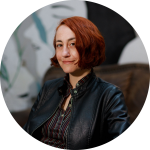
Valentina Barone is a freelance cultural manager and editor specialising in the contemporary circus and live performance sector. Since 2021, she has been Director of International Relations at the CircusDanceFestival in Cologne (Germany). She holds a BA in Performing Arts Techniques and a Master's degree in Relationship Design. She works with the international network Circostrada (France) and is an active member of the Cirkus Syd' Circus Thinkers Platform (Sweden). Valentina is the coordinator of the international digital platform Around About Circus.



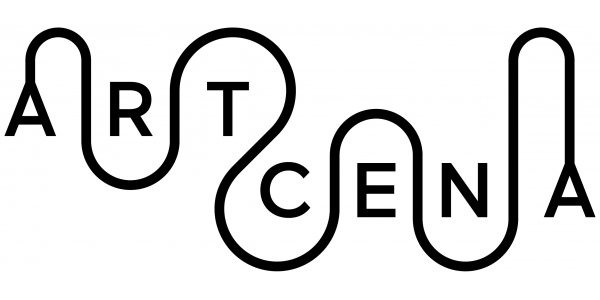

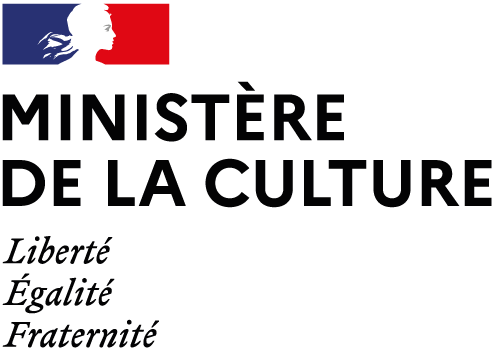
write us: infocircostrada@artcena.fr